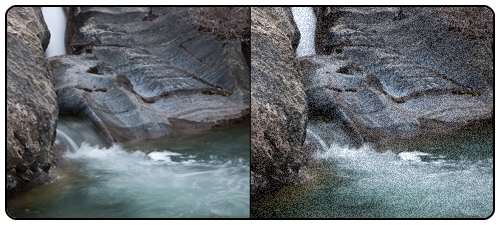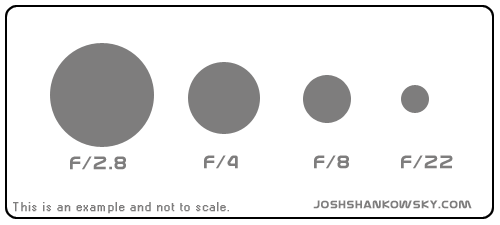


If you have been following all the lessons on my site you have now learned how to compose a photo, what all the settings on your camera do and a bit about your lenses and aperture settings, but you have not yet learned how they all come into play in how they effect your photograph and exposure / lighting.
Ultimately when we take a photograph we want the exposure to be fitting for the image to portray a certain mood. When doing this we want everything to be balanced. Setting your exposure / lighting variables there are three main variables in your camera come into play: aperture, shutter and the little known about ISO (for beginners).
Your camera settings are set so that by every turn of a dial or by every press of a button an incremental change in any of these settings will measure in one stop of lighting, one f-stop.
ISOISO is the setting in your camera that changes the light sensitivity of your camera sensor. Usually this setting will range from 50 ISO all the way up to 3200 ISO. A lower ISO (example: 50) is much better for broad day light or settings with a lot of light. On the other hand when you have a dark setting such as a club or evening you will want to shoot at a higher ISO, lets say 800-3200. When selecting your ISO there is some more things that come into play.
A higher ISO will mean you can have a faster shutter speed resulting in more stop action photos, as well allowing you to shoot in darker light. Even though you will need less light to capture a photo you will decrease contrast and increase photo grains, as a result you decrease photo quality. This is where your aperture and shutter come into play.

As you learned previously the aperture is the iris in your lens which opens and closes to change your depth of field (see Aperture & Depth of Field) however as a result this will also change how much light comes into your lens and hits your cameras sensor.
As you widen your aperture (smaller f-stop value) you increase the amount of light coming in. As you shrink your aperture (larger f-stop value) you let in less light.

For more on aperture see Aperture & Depth of Field.
ShutterYour shutter is inside your camera located directly in front of your sensor and will open and close in front of the digital sensor controlling how much light the sensor sees. This can be for a fraction of a second up to hours at a time if your camera and batteries allow.
Note: Most newer cameras have it set so one adjustment to your settings (ISO, aperture, and shutter) will result in one f-stop change of light. To my knowledge cameras can only capture up to 5 f-stops of light.
Questions? Comments? Purchasing? E-mail: shank@SpassoEntertainment.com